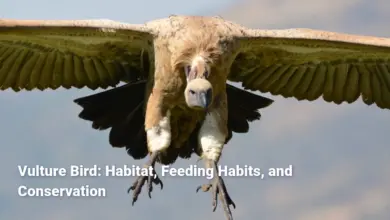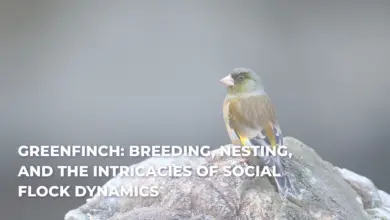Kingfisher: The Fascinating Bird
A Deep Dive into the World of Kingfishers: From Habitats to Cultural Significance
Kingfisher, belonging to the family Alcedinidae, are as vibrant and captivating as their name suggests. Known for their brilliant plumage and remarkable hunting abilities, these birds are often seen perched beside rivers, lakes, and ponds. With over 90 different species spanning continents from the tropics of South Asia to the cool waters of Europe they display an incredible variety of forms and colors. In specific regions, their presence is a signal of a healthy ecosystem, as these birds primarily exist in locations with abundant freshwater resources. The unique characteristics that define kingfishers make them a subject of admiration among birdwatchers, conservationists, and nature enthusiasts alike. This article delves deep into the enchanting world of kingfishers, exploring their physical attributes, habitats, behaviors, and the cultural significance they hold across various societies. By understanding this remarkable bird, we also uncover the larger narrative of environmental conservation, as protecting kingfishers aids in preserving the biodiversity of the ecosystems they inhabit.
Physical Characteristics of Kingfisher
The allure of kingfishers predominantly lies in their striking physical characteristics, which distinguish them from other bird families. These medium-sized birds typically feature stout bodies, large heads, and short legs, designed for their agile diving capabilities. The remarkable structure of their anatomy enables them to swiftly maneuver through air and water alike.
Key Physical Features:
- Body Structure: Kingfishers possess a robust build that enhances their agility during flight. Their short but broad wings are essential for quick turns and bursts of speed, making them adept hunters.
- Bill: The beak of a kingfisher is perhaps its most defining feature. Long, pointed, and often razor-sharp, the bill is tailored for catching fish. Compared to the size of their head, their beak appears disproportionately large, which aids in their hunting prowess.
- Plumage and Coloration: The vibrancy of a kingfisher’s plumage is awe-inspiring. Typically adorned in brilliant shades of blue, green, and orange, these colors serve dual purposes: camouflage against the water’s surface and attracting potential mates during courtship displays.
- Sexual Dimorphism: Some species display clear distinctions between males and females, with females boasting additional colors or markings. This showcases the varied adaptations across kingfisher species as they navigate their distinct environments.
In conclusion, the combination of stout bodies, formidable beaks, and dazzling plumage makes kingfishers not only exceptional hunters but also one of nature’s most visually stunning birds. Their physical traits illustrate nature’s ingenuity, revealing how form and function can harmoniously integrate for survival.
Plumage and Coloration
The vibrant plumage of kingfishers is not merely for display; it embodies the essence of their survival and role in the ecosystem. Often described as nature’s jewels, kingfishers dazzle observers with their rich hues. The coloration observed in these remarkable birds serves multiple purposes, ranging from camouflage to social signaling.
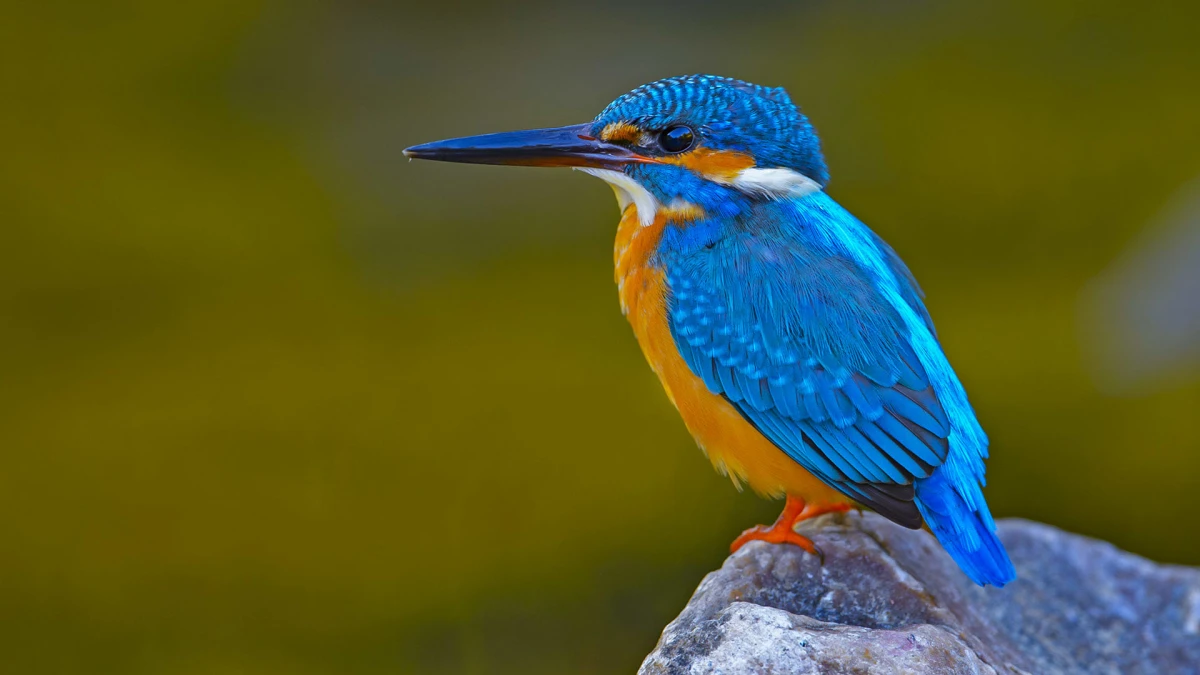
Kingfishers typically exhibit striking colors, prominently featuring shades of blue, green, orange, and white. The structural coloration of their feathers means the vibrant hues are produced not only from pigments but also from microscopic structures reflecting light. This phenomenon allows them to appear almost iridescent, changing colors depending on the angle of light a tactic that can confuse both predators and prey.
- Camouflage: The blue and green tones help them blend seamlessly into their aquatic environments, making it easier for them to ambush unsuspecting fish below the surface. Similar to how a gem can remain hidden until viewed from the right angle, the coloration of kingfishers aids their predatory efficiency.
- Mating Displays: Male kingfishers often flaunt their vibrant plumage during courtship rituals, singing melodious songs while displaying their colors in hopes of attracting a mate. These performances underscore the complexity of avian courtship behaviors.
- Variations Among Species: The coloration can vary significantly among different species. For instance, while the common kingfisher exhibits vivid blues and oranges, the belted kingfisher is characterized by its distinct chestnut band across the male’s body, showcasing a level of sexual dimorphism.
- Environmental Influence: The intensity of the colors can also reflect environmental factors, including diet and habitat. A kingfisher that thrives in a clean water environment, rich in aquatic life, is more likely to display brighter colors, indicating its vigor.
Ultimately, the plumage and coloration of kingfishers encapsulate their unique adaptations, playing crucial roles in both their survival and reproductive success. Observing these features can deepen our appreciation for the complexities of nature’s design.
Size and Shape
When it comes to size and shape, kingfishers display an intriguing array of adaptations that cater to their diverse habitats and lifestyles. Typically, these birds can be categorized as small to medium-sized, ranging in length from approximately 10 to 46 cm (about 4 to 18 inches). This size variation reflects the wide variety of ecological niches they occupy across the globe.
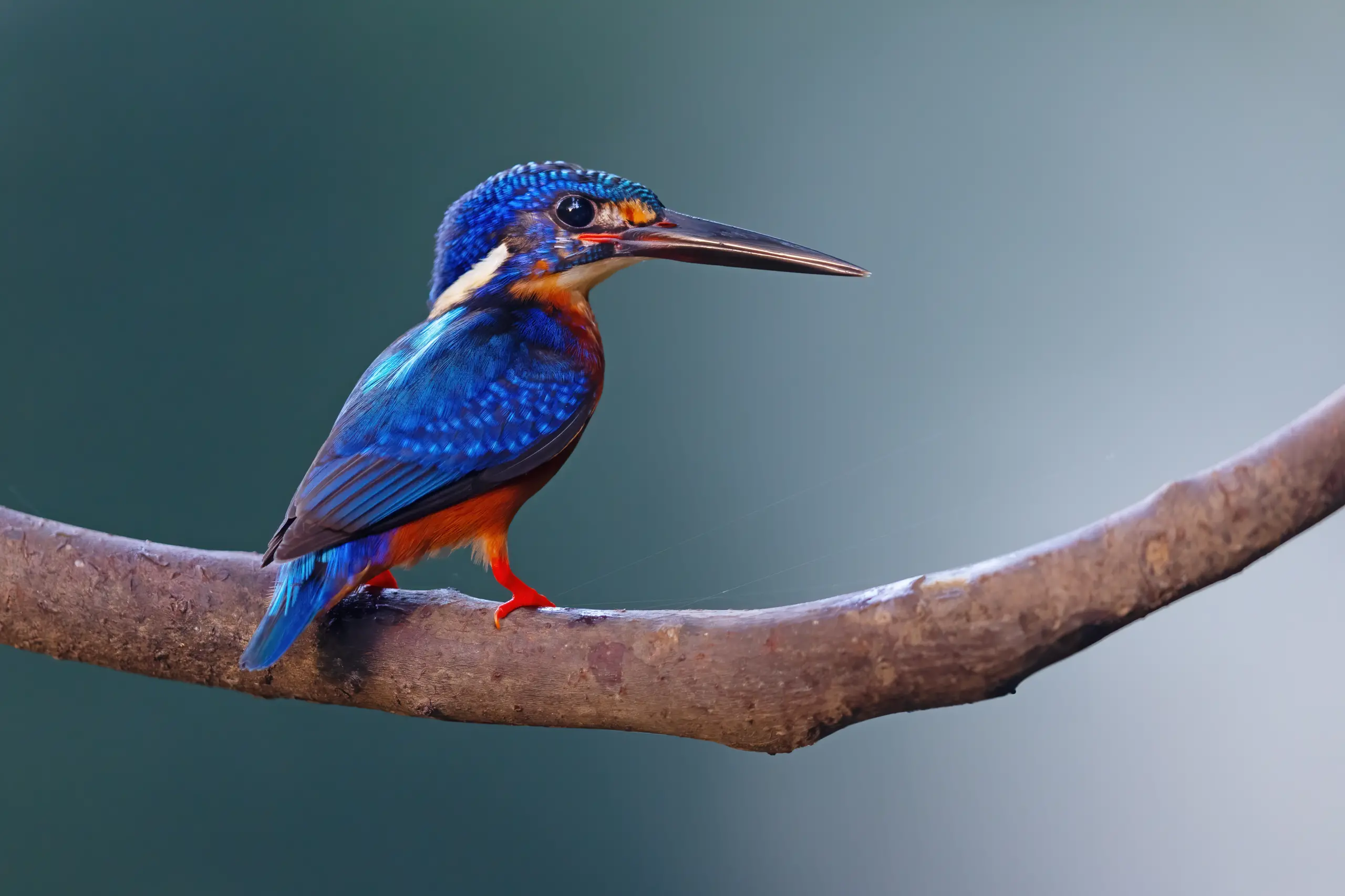
One of the most distinctive aspects of kingfishers is their body shape. They generally possess stout bodies with a large head, short neck, and short, strong legs, which are ideal traits for their hunting techniques:
- Body Proportions: Kingfishers have compact bodies that enhance their ability to fly swiftly and navigate through dense foliage near water bodies. The stout shape not only aids in stability while diving but also maintains buoyancy as they plunge into the water.
- Bill Size and Shape: Their long, pointed, and often broad bills are adaptations that vary based on the species’ specific feeding habits. For instance, while piscivorous species possess laterally flattened bills suited for catching fish, others that capture insects have more rounded shapes.
- Weight Range: The weight of kingfishers can fluctuate significantly, from about 9 grams for smaller species to 490 grams for larger ones like the giant kingfisher. This variance in weight often corresponds with the size of their prey and habitat availability.
- Foot Structure: Kingfishers’ feet are relatively small and designed for perching rather than walking. This adaptation reflects their lifestyle: they spend much of their time perched on branches or rocks while scanning for prey.
In conclusion, the size and shape of kingfishers offer a glimpse into their evolutionary adaptations. These physical attributes not only highlight their lifestyle as adept hunters but also resonate with their ecological roles, showcasing the intricate relationships between morphology, behavior, and survival in the ever-evolving natural world.
Distinctive Features
The distinction of kingfishers extends beyond their colorful plumage to several notable features that set them apart within the avian world. These unique traits contribute substantially to their hunting prowess and social interactions.
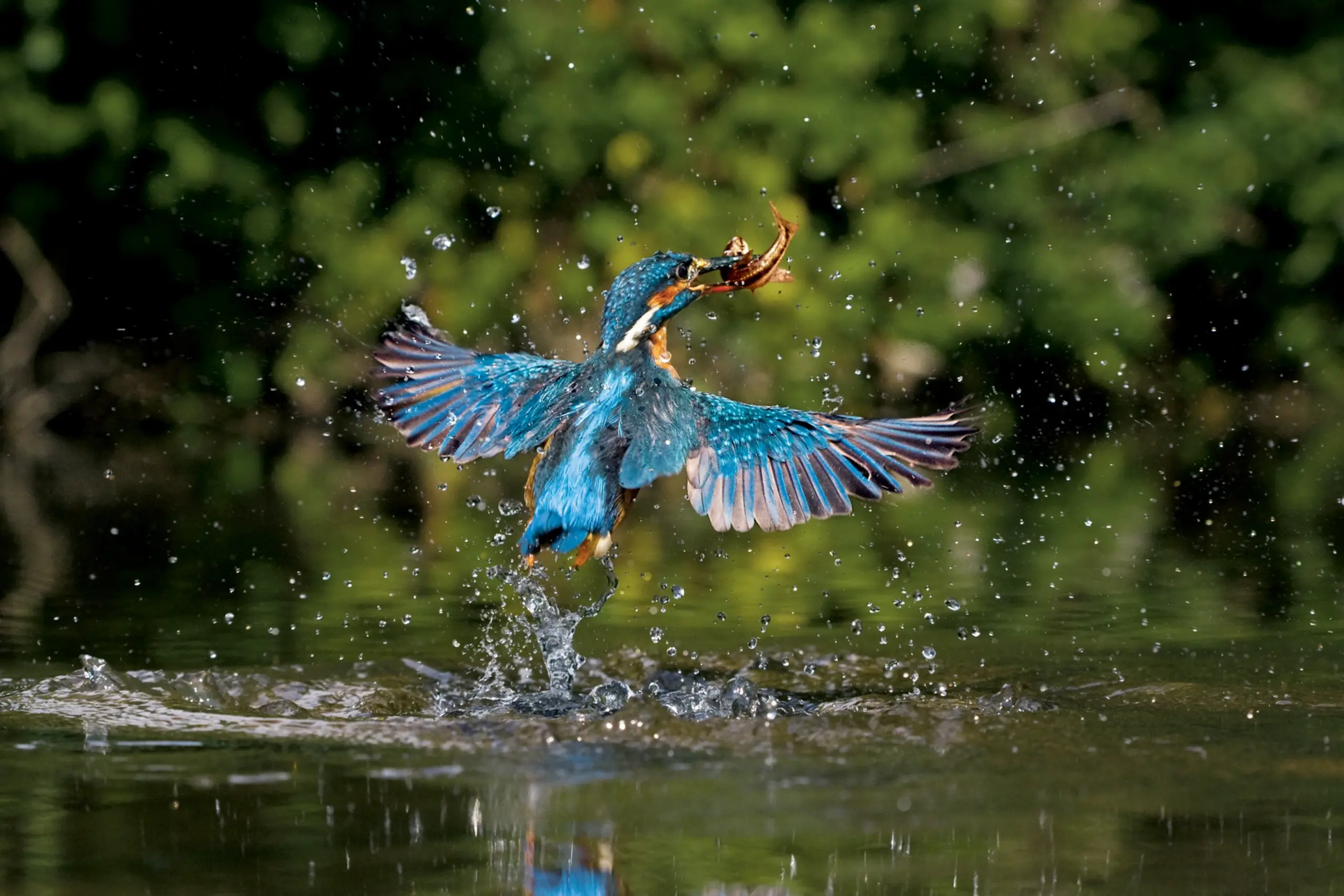
- Specialized Vision: Kingfishers are endowed with exceptional eyesight that allows them to spot prey with remarkable accuracy. Their eyes are positioned in such a way that they can see both above and below water. This dual-sight capability enables them to detect fish while perching near the shore, an essential trait for their hunting success.
- Wing Structure: The wings of kingfishers are short and broad, which enable rapid flight and agile maneuvers. This aerodynamic design allows for swift takes-off and controlled landings, facilitating their unique hunting techniques.
- Diving Technique: One of the most fascinating characteristics is their diving ability. Kingfishers can plunge into the water with precision, often diving up to 25 cm (10 inches) deep to capture their prey. When hunting, they take into account the refraction of light in the water to accurately gauge the position of the fish, a skill that exhibits their adaptability in a changing environment.
- Tail Feathers: The tail of a kingfisher is relatively short, but it plays a crucial role in their ability to maneuver swiftly through the air. During their flight, the tail can act as a rudder, allowing for quick changes in direction as they pursue their targets.
- Song and Calls: Kingfishers are known for their distinctive calls, ranging from whistles to harsh croaks, which they use for communication and territorial defense. Their vocalizations are often most pronounced during the breeding season, serving to attract mates and establish boundaries.
In essence, these distinctive features make kingfishers uniquely equipped for life in their aquatic environments. From their specialized vision and diving techniques to their vibrant calls, each characteristic reflects their evolutionary journey and the symbiotic relationship they maintain with their habitats.
Habitat and Distribution
Kingfishers are creatures intimately tied to the rhythms and flows of freshwater ecosystems. Their habitats reflect their reliance on water, primarily being found near rivers, wetlands, lakes, and ponds. This close association with aquatic environments is an essential aspect of their behavior and survival, making their distribution geographically expansive while reiterating the significance of clean waterways.
- Habitat Preferences: Kingfishers thrive in areas with slow-moving to stagnant waters, which allow them to scout for fish and other prey. They prefer habitats with minimal vegetation clutter, as clear sightlines aid in hunting. Their nesting sites are typically earthen banks along rivers or lakes, where they excavate burrows to safely rear their young.
- Geographical Spread: While kingfishers are widespread, they are particularly abundant in tropical regions. Their range extends globally, excluding Antarctica, and they can be found across North America, Europe, Africa, Asia, and Australia. Each region is home to species uniquely adapted to local conditions, utilizing the available resources for survival.
- Ecological Indicators: The presence of kingfishers in an area serves as an ecological indicator, signifying the health and quality of aquatic ecosystems. Since they rely on clean water for hunting, their population stability often reflects the state of the environment around them.
- Environmental Threats: Changes in habitat due to urbanization, pollution, and climate change pose significant threats to kingfishers across the globe. Their reliance on pristine environments makes them particularly vulnerable as environmental degradation increasingly impacts freshwater ecosystems.
In summary, kingfishers inhabit a diverse range of water bodies, each selected based on how well it supports their hunting and breeding needs. Their adaptation to wetlands and the availability of clean waterways are crucial, emphasizing the need to preserve these environments for the longevity of kingfisher populations and the ecological health of freshwater habitats globally.
Natural Habitats
Kingfishers flourish in a variety of natural habitats, drawn primarily to ecosystems that boast plentiful water sources. Their preference for specific environments shapes their behavior, feeding habits, and nesting practices, leading to an intricate relationship between these birds and their habitats.
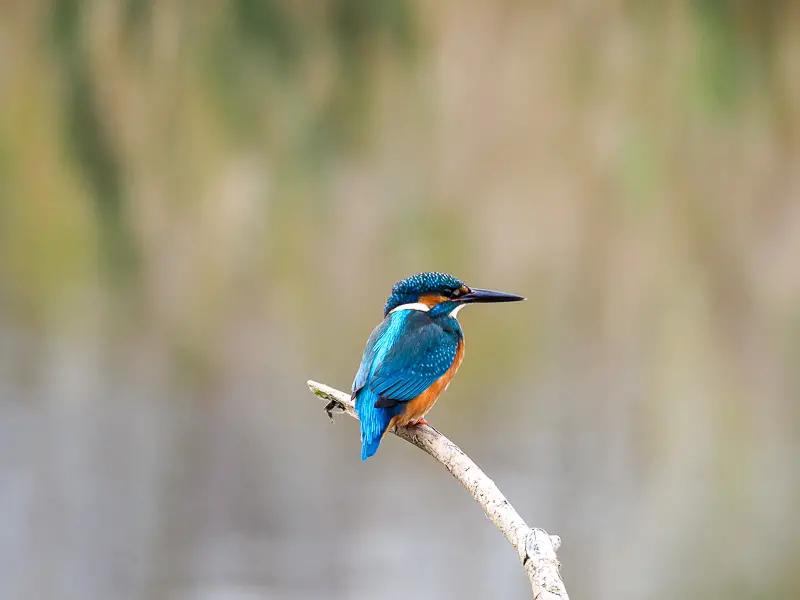
- Freshwater Ecosystems: The majority of kingfishers are predominantly found in freshwater habitats such as rivers, lakes, ponds, and marshlands. These environments provide abundant fish and aquatic invertebrates primary food sources. Riverbanks with overhanging vegetation are particularly important, as they offer perching spots for hunting while concealing them from potential prey.
- Wetlands: Wetlands play a crucial role in the ecology of kingfishers. These ecosystems support diverse plant life, which contributes to the investigation of feeding patterns and offers great opportunities for nesting. Kingfishers use wetland shrubs to rest and hunt, showcasing their adaptability in varied environments.
- Coastal Areas: Some species of kingfishers have adapted to coastal habitats, where they can forage along beaches and estuarine environments. Coastal habitats provide them access to both freshwater and marine fish, displaying their versatility in finding appropriate feeding grounds.
- Human Altered Landscapes: In some instances, kingfishers have adapted to human-modified environments such as canals, reservoirs, and urban parks. However, the sustainability of these habitats often hinges on maintaining nearby natural ecosystems, underscoring the need for mindful development practices that do not disrupt local wildlife.
In conclusion, kingfishers require specific natural habitats to thrive, reliant on the balance of water availability, prey abundance, and adequate nesting sites. The delicate nature of these habitats illustrates the ongoing necessity for conservation efforts to safeguard these ecosystems, allowing kingfishers and countless other organisms to flourish within their environments.
Global Distribution of Kingfisher
The global distribution of kingfishers paints a fascinating picture of biodiversity and ecological adaptation. Found across every continent except Antarctica, these birds occupy a wide array of habitats, reflecting their remarkable resilience and adaptability.
- Continental Reach: Kingfishers are most abundant in tropical regions, especially in Africa, Asia, and Australia, where species diversity is greatest. The rich biodiversity in these areas supports the wide range of fish and invertebrates that these birds rely on for sustenance.
- Europe and North America: In Europe, the common kingfisher (Alcedo atthis) can be found throughout the continent, favoring areas near bodies of clean, slow-moving water. North America hosts species like the belted kingfisher (Megaceryle alcyon), which thrives in a variety of aquatic environments.
- Isolation in Island Regions: Unique species can also be observed in island ecosystems. Endemic species such as the Guam kingfisher highlight the vulnerability of localized populations, which face threats from habitat loss and invasive predators.
- Adaptations to Habitat: The adaptability of kingfishers to diverse environments is evidenced by their prevalence in altered landscapes. They can navigate modified ecosystems, such as irrigation channels, if food sources remain plentiful and nesting sites are available.
In summary, the global distribution of kingfishers underscores not only their adaptability to various habitats but also the importance of conserving these environments. Different species require diverse ecological conditions to thrive, demonstrating how intertwined their survival is with the health of the planet’s freshwater systems.
Environmental Adaptations
Kingfishers have evolved a range of environmental adaptations that allow them to thrive in their specific habitats. These adaptations not only enhance their hunting efficiency but also ensure their survival amid the challenges posed by ecosystem changes.
- Keen Visual Acuity: One of the most significant adaptations is their exceptional eyesight, which enables kingfishers to see clearly underwater and spot potential prey from above. This remarkable adaptation allows them to dive with accuracy, leading to effective hunting. Their vision extends into the ultraviolet spectrum, further enhancing their ability to locate fish and other aquatic organisms.
- Diving Technique: Their bodies are uniquely designed for diving. Along with small, powerful wings for agile flight, they have streamlined shapes that reduce water resistance. This enables them to plunge with precision and speed, often reaching depths of up to 25 cm (10 inches) in search of fish.
- Nesting Habits: Kingfishers often construct nests in earthen burrows along riverbanks, a technique that protects their young from predators and flooding. The burrows provide a stable environment for eggs and chicks, illustrating their ability to adapt to specific ecological niches for breeding success.
- Dietary Flexibility: While many kingfishers predominantly eat fish, certain species have adapted to include a wider variety of prey, such as insects, amphibians, and small crustaceans. This flexibility allows them to exploit different food sources depending on availability, showcasing their resilience to changing environmental conditions.
In summary, the various environmental adaptations of kingfishers emphasize their impressive evolutionary journey. From specialized vision and hunting techniques to unique nesting behaviors and dietary flexibility, these birds showcase the intricate interplay between form, function, and survival in a dynamic world.
Behavior and Feeding Habits
Kingfishers are not only celebrated for their dazzling appearance but also for their fascinating behaviors and feeding habits that make them effective predators in their ecosystems. Their ability to adapt to varying environments and prey availability marks their evolutionary success.
- Foraging Techniques: Kingfishers primarily adopt a perching and diving technique for hunting. They typically select a high vantage point, such as a branch or rock, from which they can scan the water for movement. Once they spot their prey, they dive headfirst, using their sharp, pointed beak to capture fish. Their keen eyesight is crucial for this process, allowing them to judge distances accurately as they prepare to plunge into the water.
- Hovering: Some species can also employ a hovering technique above the water’s surface before diving. This method allows them to gain a better visual perspective of their surrounding environment and potential prey. The ability to hover enhances their efficiency in catching fish, particularly in clear waters.
- Diet: The diet of kingfishers mainly consists of fish, specifically small species that inhabit their preferred water bodies. However, their diet can also extend to include various aquatic invertebrates, frogs, crustaceans, and, in some cases, even insects or small terrestrial animals. Their opportunistic feeding behavior showcases flexibility based on local prey availability.
- Feeding Frequency: Kingfishers require a significant amount of food to sustain their energy levels. An adult kingfisher typically consumes 50-60% of its body weight each day, while growing chicks may need around 100 fish daily. This high demand emphasizes the necessity for healthy aquatic environments rich in prey species.
Through their impressive behaviors and specialized feeding habits, kingfishers play a crucial role in their ecosystems, acting as indicators of water body health while managing fish populations. Observing their interactions with the environment provides deep insights into the complex dynamics of aquatic ecosystems.
Hunting Techniques
The hunting techniques employed by kingfishers highlight their adaptations and skills as proficient predators. Their methods are a blend of agility, visual acuity, and precision, encapsulating a remarkable evolutionary journey.
- Perch and Dive: A hallmark of kingfisher hunting behavior involves perching silently on a branch or rock near the water’s edge. From this elevated position, they utilize their exceptional eyesight to spot fish swimming below. Upon identifying a target, they swiftly dive, often executing a graceful entry into the water with little splash. This technique underscores their efficiency and minimizes the chances of startling potential prey.
- Hovering: Some species of kingfishers utilize hovering as part of their hunting repertoire. They can remain suspended in the air for a brief moment, allowing them to scan the water’s surface more effectively. This method is particularly advantageous in clear waters, where visibility is high, giving them better opportunities to catch fish.
- Manipulation of Prey: After successfully capturing their prey, kingfishers may need to manipulate the fish, especially if it’s larger than their typical catch. They may carry the fish to a hard surface to stun it, making it easier to consume. This behavior illustrates their adaptability and resourcefulness in overcoming challenges during feeding.
- Timing and Location: Kingfishers are highly attuned to environmental cues. They tend to hunt during specific times of the day, taking advantage of periods when fish are most active. Their choice of hunting spots also reflects a learned understanding of local fish behavior and aquatic ecosystem dynamics.
In summary, the hunting techniques of kingfishers emphasize their adaptability and mastery of their environments. These hunting strategies not only ensure their survival but also contribute to the balance of aquatic ecosystems, underscoring the importance of preserving their habitats.
Diet and Prey Selection
Kingfishers are primarily known for their piscivorous diet, but their feeding habits and prey selection are more varied and nuanced than often perceived. Understanding their dietary preferences can provide insight into their role within ecosystems and the complexities of their survival strategies.
- Core Diet: The main dietary component for most kingfishers consists of fish, with their hunting technique finely tuned for catching these aquatic animals. Depending on the specific species, the size of fish can range widely; for instance, common kingfishers target fish around 23 mm (0.9 inches) but can capture those up to 125 mm (4.7 inches) long. In contrast, species like the belted kingfisher often pursue larger fish, generally preferring sizes between 90 and 140 mm.
- Supplementary Prey: While fish are the primary focus, kingfishers also include a variety of supplementary prey in their diets. This can consist of amphibians like frogs, crustaceans, and various small invertebrates, especially when fish are less abundant. Some species exhibit broader diets, capturing small mammals and insects during leaner times.
- Hunting Behavior: Kingfishers employ different hunting approaches based on the type of prey being pursued. For example, when targeting fish, they often utilize their perch-and-dive technique, while smaller prey may prompt them to forage closer to vegetation or along shorelines. Their hunting behavior showcases their versatility and adaptability to environmental conditions.
- Feeding Frequency: A kingfisher’s feeding behavior often correlates with its daily routines. They are known for their high food intake; growing chicks may consume up to 100 fish daily, while adults aim to consume enough food to maintain a 50-60% body weight. This remarkable feeding frequency underscores the reliance of kingfishers on healthy aquatic ecosystems rich in prey diversity.
In conclusion, kingfishers exhibit remarkable dietary flexibility that not only aids in their survival but also plays a critical role in maintaining the ecological balance of their environments. Their ability to adapt to available food sources demonstrates the complexities of their interactions within the ecosystems they inhabit. Understanding these dietary habits further emphasizes the need for conservation efforts aimed at preserving their natural habitats.
Social Behavior and Nesting
Kingfisher social behavior and nesting practices are intriguing facets of their lives, significantly impacting their reproductive success and overall population dynamics. While these birds are generally solitary outside the breeding season, their social interactions during this time reveal fascinating behavioral patterns.
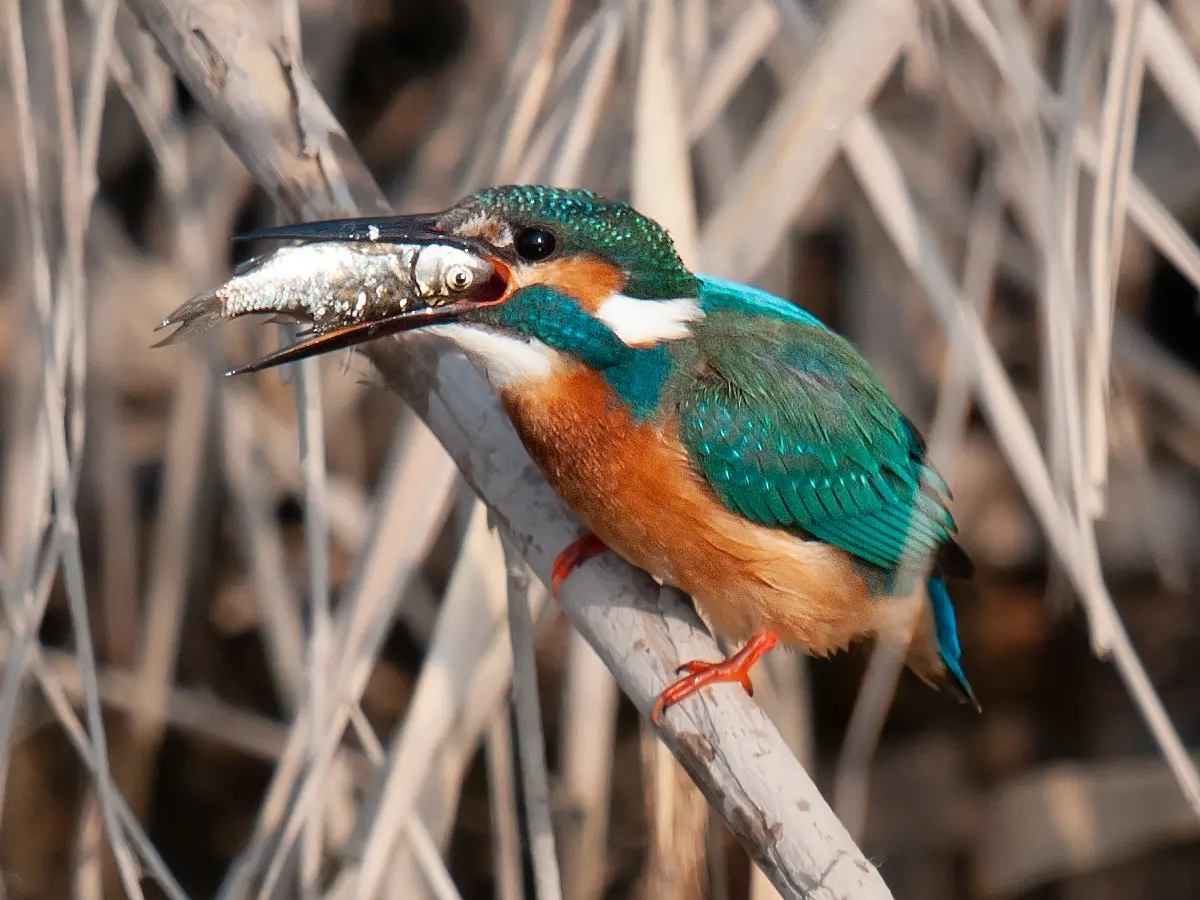
- Territoriality: Kingfishers are known to be territorial. During the breeding season, males establish territories that they defend vocally and physically from intruders. Their notable calls and displays often serve as both warnings and announcements of their presence. Establishing a secure breeding territory is critical for successful reproduction, as it ensures access to abundant food resources needed to raise their young.
- Courtship Rituals: Courtship behaviors between males and females involve intricate displays of color and song. Males often present gifts of fish to females during courtship feeding, showcasing their hunting prowess and serving as an attractive trait. This exchange not only strengthens pair bonds but also plays a crucial role in mate selection, as females prefer males that can secure high-quality food sources.
- Nesting Behavior: Kingfishers typically nest in burrows excavated into earthen banks along rivers or lakes. These nests can be extensive tunnels that keep their eggs safe from predators and environmental threats. The choice of nesting site is essential; kingfishers prefer locations that provide sufficient cover and protection from potential flooding.
- Parental Care: Both male and female kingfishers participate in the incubation of eggs, which typically ranges from two to ten eggs, depending on the species. After a gestation period of about 20 days, the chicks hatch altricial, meaning they are initially dependent on parental care for food and protection. The parents strive to provide a secure environment, feeding the chicks while gradually teaching them how to hunt as they grow older.
In summary, kingfishing social behavior encompasses a fascinating blend of territoriality, courtship, and cooperative breeding. Their nesting practices and parental care highlight the complex relationships within kingfisher pairs, emphasizing the significance of social interactions for their reproductive success. Understanding these dynamics helps to identify areas where conservation efforts can be focused to support stable populations.
Species of Kingfisher
Kingfishers encompass a remarkable range of species, showcasing an array of adaptations that suit their diverse habitats and feeding behaviors. Understanding the distinct species of these birds can illuminate the complexities of their ecological roles and the importance of conservation efforts.
Here are some notable species of kingfishers and their key characteristics:
- Common Kingfisher (Alcedo atthis):
- Habitat: Prefers clear, slow-moving waters and can be found across Europe, Asia, and North Africa.
- Diet: Primarily feeds on small fish, but also consumes insects and crustaceans.
- Conservation Status: Classified as “Least Concern” but vulnerable to habitat degradation and pollution.
- Belted Kingfisher (Megaceryle alcyon):
- Habitat: Found near freshwater in North America, including streams, rivers, and lakes.
- Diet: Mainly fish but can also consume crayfish and other small aquatic animals.
- Conservation Status: Generally stable, but populations face threats from habitat loss and pollution.
- Giant Kingfisher (Megaceryle maxima):
- Habitat: Inhabits larger bodies of water across Africa.
- Diet: Prefers larger fish and is known for its powerful diving capabilities.
- Conservation Status: Not endangered, though subject to habitat destruction.
- Pied Kingfisher (Ceryle rudis):
- Habitat: Inhabiting wetlands and coastal areas across Africa and parts of Asia.
- Diet: Primarily piscivorous, employing hovering techniques for hunting.
- Conservation Status: Generally stable, but local populations can suffer from habitat changes.
- Green Kingfisher (Chloroceryle americana):
- Habitat: Found in Central and South America near slow-moving rivers and lakes.
- Diet: Feeds on fish and aquatic invertebrates.
- Conservation Status: Generally stable, though habitat destruction poses a risk in specific areas.
- Guam Kingfisher (Todiramphus cinnamominus):
- Habitat: Endemic to Guam, traditionally inhabiting forested areas.
- Diet: Omnivorous, feeding on insects and small animals.
- Conservation Status: Critically endangered, with program efforts ongoing to recover populations.
In summary, the diverse range of kingfisher species provides insight into their adaptability and ecological significance. Factors such as habitat preferences, dietary habits, and conservation statuses highlight their complex interactions with environments. Awareness of these species promotes the importance of biodiversity and the urgent need for concerted conservation efforts.
Common or Eurasian Kingfisher (Alcedo atthis)
The common kingfisher, also known as the Eurasian kingfisher, is a bird that epitomizes both beauty and adaptability. With its stunning coloration and remarkable hunting skills, this species is often a favorite among birdwatchers and nature enthusiasts alike.
- Taxonomy and Description: Alcedo atthis belongs to the family Alcedinidae. Characterized by its vibrant blue upperparts, an orange belly, and a long, pointed bill, it measures approximately 16 to 18 cm in length with a wingspan of about 25 cm. The male and female species exhibit similar coloration but may have slight variances.
- Distribution and Habitat: The common kingfisher is prevalent across Europe, Asia, and parts of North Africa. It prefers clear, slow-moving waters with abundant vegetation along the banks. These environments provide the necessary cover for hunting and nesting.
- Diet and Feeding Behavior: This species primarily feeds on small fish, often employing a diving technique to catch its prey. They can dive up to 25 cm deep, showcasing their specialized hunting adaptation. Additionally, aquatic insects and crustaceans are also incorporated into their diet when fish populations are low.
- Breeding and Lifespan: The nesting habits of common kingfishers involve excavating tunnels into riverbanks, where they lay between two to ten glossy white eggs. These eggs are incubated for about 19 to 20 days. The chicks are altricial, relying on parental care for food and protection until they fledge around 24 to 25 days after hatching.
- Conservation Status: The common kingfisher is designated as “Least Concern” on the IUCN Red List, indicating that it does not currently face immediate extinction risks. However, populations may be affected by habitat loss and water pollution, highlighting the need for ongoing conservation efforts to maintain their thriving populations.
In conclusion, the common kingfisher serves as an essential indicator of freshwater health. Its vibrant presence in various ecosystems highlights the importance of preserving natural habitats for the survival of these stunning birds and the biodiversity they represent.
Other Notable Species
Aside from the common kingfisher, several other notable species exhibit unique traits and behaviors that further illuminate the rich diversity within the kingfisher family. Understanding these species allows us to appreciate their ecological roles and conservation status. Here are some remarkable examples:
- Belted Kingfisher (Megaceryle alcyon):
- Habitat: Commonly found across North America, belted kingfisher apprentice over streams, lakes, and ponds.
- Diet: Primarily piscivorous, but known to consume crustaceans and insects as well.
- Conservation Status: Populations are stable, but habitat changes can pose risks to local populations.
- Giant Kingfisher (Megaceryle maxima):
- Habitat: Predominantly found near larger bodies of water in Africa.
- Diet: Feeds on larger fish and has a notable diving ability.
- Conservation Status: Not threatened but vulnerable to habitat degradation.
- Pied Kingfisher (Ceryle rudis):
- Habitat: Often inhabits wetlands and coastal areas throughout Africa and parts of Asia.
- Diet: Primarily catches fish through characteristic hovering before diving.
- Conservation Status: Generally stable, though some local populations may decline due to environmental changes.
- Green Kingfisher (Chloroceryle americana):
- Habitat: Inhabits freshwater bodies in Central and South America, especially around slow-moving rivers.
- Diet: Feeds on fish and various aquatic invertebrates.
- Conservation Status: Generally stable, but habitat destruction remains a concern in specific regions.
- Guam Kingfisher (Todiramphus cinnamominus):
- Habitat: Endemic to Guam and primarily resides in forested areas.
- Diet: Omnivorous, capturing insects and small animals.
- Conservation Status: Critically endangered, with fewer than 140 individuals remaining due to habitat destruction and invasive species.
In summary, the variety of kingfisher species exemplifies adaptation and ecological diversity. Each species uniquely integrates into its habitat, reflecting the interplay between environment and evolutionary pressures. Conservation efforts aimed at protecting these species are critical in maintaining biodiversity within ecosystems around the world.
Conservation Status of Kingfisher
The conservation status of kingfishers illustrates both the challenges and triumphs faced by these birds as they navigate a rapidly changing world. Understanding their status is vital for prioritizing conservation efforts and creating protective measures for their habitats.
- Global Distribution: Kingfishers are widely distributed across the globe, with species spanning from the tropics to temperate regions. However, habitat loss and environmental degradation threaten their populations, particularly in areas impacted by urbanization, pollution, and climate change.
- IUCN Red List Categories: Many kingfisher species are categorized on the IUCN Red List, which assesses their risk of extinction. While some species, like the common kingfisher and the belted kingfisher, are listed as “Least Concern,” others, such as the Guam kingfisher, are critically endangered, highlighting the disparities between species.
- Major Threats: Kingfishers face several significant threats, including:
- Habitat Loss: Urban expansion and agricultural activities often lead to the destruction of critical wetland and riparian habitats, forcing kingfishers to compete for resources.
- Pollution: Water pollution, contaminated by agricultural run-off and industrial waste, can adversely affect the health of kingfisher populations and their prey.
- Climate Change: Altered weather patterns and rising temperatures can lead to changes in fish populations, impacting food availability for kingfishers.
- Conservation Initiatives: Efforts to conserve kingfishers vary by region and often focus on protecting critical habitats and restoring ecosystems to support healthy populations. Conservation programs include:
- Habitat Protection: Establishing protected areas where kingfishers can thrive free from human interference is vital for preserving their ecosystems.
- Public Awareness: Raising awareness about the importance of conserving kingfishers and their habitats can foster community support for environmental protections.
- Restoration Projects: Active restoration programs for wetlands and riparian zones can enhance habitat quality and food availability, allowing populations to recover.
In conclusion, the conservation status of kingfishers highlights the need for ongoing efforts to address environmental and anthropogenic factors affecting their populations. Understanding these dynamics is crucial for shaping conservation strategies aimed at preserving these magnificent birds and the ecosystems they inhabit.
Cultural Significance
Kingfishers possess a richness of cultural significance that extends beyond biology, embracing symbolism and folklore across numerous societies. Their presence in various cultures elevates these birds from mere wildlife to emblems of beauty, inspiration, and ecological messages.
- Symbolism in Different Cultures: Kingfishers are often associated with themes of peace, prosperity, and renewal. In Chinese culture, for instance, these birds symbolize good fortune, while in Japan, they are revered as embodiments of tranquility. This diverse representation underscores how kingfishers hold unique places in different cultural narratives.
- Folklore and Myths: Throughout history, kingfishers have been featured in myths and legends. In Greek mythology, the goddess Alcyone is transformed into a kingfisher, highlighting themes of tranquility and protection. This connection has contributed to the term “halcyon days,” representing peaceful times and reflecting the cultural importance of these birds as symbols of hope during difficult periods.
- Kingfishers in Literature and Art: The striking plumage of kingfishers has captured the attention of poets, artists, and writers throughout various disciplines. These birds frequently appear in artistic representations, often symbolizing beauty, grace, and the transient nature of life. The awe surrounding their beauty serves as a reminder of the intricate connections between humans and nature.
- Environmental Awareness: In contemporary discussions about conservation, kingfishers play a vital role as indicators of freshwater ecosystem health. Their presence in literature and environmental art emphasizes the need for stewardship of natural habitats. This positioning reinforces the message that protecting kingfishers and their environments benefits broader biodiversity and ecological well-being.
In summary, the multi-faceted cultural significance of kingfishers transcends biological interest, intertwining them with human narratives. This cultural context promotes greater awareness of their ecological importance and underscores the need for conservation efforts to ensure their continued presence and the health of the environments they represent.
Kingfishers in Literature and Art
Kingfishers occupy a cherished place in literature and art, often symbolizing the delicate balance of nature and human emotion. Their vibrant presence serves as a compelling motif, evoking themes of beauty, renewal, and reflection among various creative expressions.
- Literary Symbolism: In literature, kingfishers are frequently used as symbols of hope and inspiration. For example, in Mary Oliver’s poem “The Kingfisher,” the bird is employed as a metaphor for the creative process, where the act of diving into the water represents the artist’s journey into introspection. This connection illustrates how nature can inform and inspire artistic expression, deeply resonating with human emotions.
- Artistic Representations: The unique coloration and grace of kingfishers have made them popular subjects in visual arts. Artists have portrayed these birds in paintings, sculptures, and illustrations, often emphasizing their stunning plumage and dynamic movement. The beauty of the kingfisher’s colors can evoke themes of life’s transience, as the vibrant yet fleeting beauty of the bird mirrors human experiences.
- Cultural Interpretations: In various cultural contexts, the depiction of kingfishers has significance beyond aesthetics. They often represent themes of wisdom, balance, and the necessity of preserving natural beauty. Artists and writers alike incorporate these motifs into their works to provoke thought about the connections between humanity and the environment.
- Environmental Advocacy: The portrayal of kingfishers in literature and art contributes to raising awareness about environmental conservation. Artists and writers who celebrate the beauty of these birds often aim to invoke a sense of responsibility toward protecting the ecosystems that sustain them. This representation emphasizes the importance of habitat preservation as a key narrative in contemporary ecological discussions.
In conclusion, the presence of kingfishers in literature and art reveals their profound influence on human creativity and cultural identity. These birds serve as reminders of nature’s beauty and fragility, inspiring ongoing reflection on our relationship with the environment and advocating for conservation efforts to protect such captivating creatures.
Symbolism and Folklore
Kingfishers have transcended their roles as mere avian species to embody powerful symbols in various cultural folklores. Their unique behaviors and striking appearances have led to their significant representation across numerous traditions and mythologies.
- Peace and Harmony: In many cultures, kingfishers are seen as symbols of peace and harmony. Their serene presence near water bodies inspires tranquility, often interpreted as omens of good fortune. In Chinese folklore, the kingfisher is linked to positive outcomes, serving as a favorable sign in the cultural belief systems surrounding fortune-telling.
- Spiritual Messengers: Kingfishers are often perceived as messengers or spiritual guides. In Native American traditions, they represent protection and guidance, signaling a connection between earthly existence and the spiritual realm. Encountering a kingfisher is considered a reminder to stay true to one’s path and maintain harmony in life.
- Mythical Connections: Kingfishers are entwined in various myths and legends. In Greek mythology, the goddess Alcyone, who transformed into a kingfisher, personifies calmness amidst turmoil. The term “halcyon days,” which refers to peaceful periods, originated from this myth, enhancing the bird’s association with tranquility and serenity.
- Celtic Folklore: In Celtic traditions, kingfishers symbolize wisdom and foresight. Associated with water, they signify the interplay between intuition and the mysteries of life. In this context, kingfishers are often viewed as guides for those seeking deeper understanding and insight into their surroundings.
In summary, the diverse symbolism and rich folklore surrounding kingfishers highlight their multifaceted significance across different cultures. They represent not only natural beauty but also embody deeper truths about human existence, illustrating the interconnectedness of life and the environment.
Kingfisher in Popular Media
Kingfishers have made notable appearances in various forms of popular media, serving as both subjects of admiration and symbols of environmental awareness. Their representation in films, literature, and art underscores their impact on culture and conservation.
- Fictional Portrayals: In children’s literature, kingfishers are often depicted as magical creatures guiding young protagonists on adventures. These narratives appeal to the imagination, encouraging appreciation for nature’s beauty while fostering a sense of wonder about wildlife. For instance, stories that feature kingfishers can impart lessons on environmental stewardship through engaging storytelling.
- Documentaries and Nature Films: Kingfishers frequently appear in wildlife documentaries, showcasing their hunting techniques and vibrant habitats. These visual representations serve to educate audiences about the vital roles that kingfishers play within ecosystems, reinforcing the importance of habitat conservation. Such documentaries celebrate their beauty and intrigue, offering viewers insights into their lifestyles and behaviors.
- Conservation Campaigns: In recent years, kingfishers have been utilized as symbols in environmental campaigns aimed at raising awareness about ecosystem preservation. Their vibrant colors and unique adaptations highlight the fragility of natural habitats, promoting a broader message concerning biodiversity and environmental health. These campaigns often seek to evoke emotions of empathy and responsibility, engaging the public in conservation discussions.
- Art and Design: The striking appearance of kingfishers has inspired various artistic endeavors in popular media, including graphic design, photography, and public art installations. Artists utilize kingfishers to convey messages about beauty, nature, and the need for ecological balance. Their imagery often serves as a call to action, urging audiences to recognize the interconnectedness of all living beings.
In summary, the representation of kingfishers in popular media spans various formats and contexts, highlighting their cultural significance and ecological importance. Their presence serves as a reminder of nature’s magnificence and the responsibility to protect vulnerable ecosystems for future generations.
Kingfisher Conservation Efforts
The conservation of kingfishers is critical to maintaining healthy ecosystems and biodiversity. Given the challenges that these birds and their habitats face, systematic conservation efforts are increasingly vital to preserving kingfisher populations and the ecosystems they inhabit.
- Habitat Preservation: The foremost conservation effort involves protecting and restoring kingfisher habitats, particularly freshwater ecosystems. Initiatives focus on maintaining the integrity of riverbanks, wetlands, and lakes, ensuring that these environments remain free from pollution and development pressures. By safeguarding these habitats, conservationists aim to provide safe breeding grounds and ample food sources for kingfishers.
- Public Engagement: Engaging communities in conservation efforts is essential for promoting awareness about the significance of kingfishers and their habitats. Educational programs and outreach initiatives help foster appreciation for biodiversity, emphasizing individual responsibility to protect local ecosystems. By raising awareness, communities can become active participants in conservation, advocating for sustainable practices.
- Legal Protections: Implementing legislative measures that protect kingfishers and their habitats is crucial. This includes establishing protected areas, implementing conservation regulations, and monitoring impacts from human activity. Legal protections ensure that the necessary frameworks exist to mitigate threats and support the recovery of vulnerable species.
- Research and Monitoring: Ongoing research is vital for understanding kingfishers’ ecological roles and the threats they face. Monitoring populations and habitat conditions helps identify changes that may negatively impact kingfisher species. Data gathered from research informs adaptive management strategies, ensuring conservation efforts are effective and evidence-based.
- Community-Based Initiatives: Promoting local conservation efforts and empowering communities living alongside kingfisher habitats can significantly benefit the species. Community-based initiatives can encourage sustainable land-use practices, connecting residents’ livelihoods with environmental stewardship. Such approaches foster a sense of ownership and responsibility toward local ecosystems.
In summary, kingfisher conservation efforts encompass various strategies aimed at protecting their habitats, engaging communities, and implementing legal protections. By connecting people with nature and fostering sustainable practices, these initiatives contribute to the preservation of vibrant ecosystems critical for the survival of kingfishers and countless other wildlife species.
Threats to Habitat
The survival of kingfishers is fundamentally tied to the health of their habitats, and various threats put these critical ecosystems at risk. Understanding these threats is essential for formulating effective conservation strategies that ensure kingfisher populations remain viable in the long term.
- Urbanization and Development: Rapid urban expansion often leads to the destruction of riverbanks, wetlands, and other habitats where kingfishers thrive. Constructions like buildings, roads, and recreational areas compromise the natural landscape, disrupting the delicate balance required to sustain aquatic ecosystems. The alteration of habitats forces kingfishers to compete for resources, ultimately putting their populations at risk.
- Pollution: Water pollution is one of the most critical threats facing kingfishers. Contaminated water bodies can diminish fish populations and cause health issues within bird communities. Pesticides, industrial run-offs, and waste disposal find their way into ecosystems, reducing water quality and threatening the aquatic life that kingfishers depend on for food.
- Climate Change: Alterations in climate patterns significantly impact freshwater ecosystems. Changes in rainfall, temperature, and seasonal cycles can affect fish populations, water availability, and nesting conditions for kingfishers. These shifts may lead to a mismatch between prey availability and the demands of breeding, resulting in reduced survival rates for young birds.
- Invasive Species: The introduction of invasive species can disrupt local ecosystems, creating competition for resources. Invasive predators, for example, may pose a danger to nesting kingfishers and their young. Additionally, invasive plants can alter the structure of habitats, diminishing the availability of suitable nesting sites and food sources.
- Overfishing: Overfishing in freshwater bodies can deplete fish populations, directly affecting kingfisher feeding success. In regions where fish stocks are targeted for commercial purposes, kingfishers may struggle to find adequate food, impacting their reproductive success and overall population health.
In summary, the threats to kingfisher habitats are multifaceted, stemming primarily from human activity and environmental changes. The interaction between these threats underscores the need for effective conservation strategies that promote habitat protection and restoration, ensuring the long-term survival of kingfishers in their natural ecosystems.
Conservation Programs
Conservation programs are essential for protecting kingfisher species and fostering recovery in areas impacted by habitat loss and environmental degradation. These initiatives aim to stabilize populations and enhance the ecological health of the regions where kingfishers thrive. Here are some examples of compelling conservation efforts focused on these vibrant birds:
- Habitat Restoration Projects: Various programs emphasize the restoration of vital habitats that kingfishers depend on, such as wetlands and riparian zones. Initiatives may include replanting native vegetation along riverbanks, improving water quality, and removing invasive species that threaten these ecosystems. By restoring natural habitats, conservationists provide necessary resources and shelter for kingfisher populations.
- Community Involvement: Engaging local communities in conservation efforts is critical for promoting stewardship of natural resources. Community-based conservation programs provide education on the significance of preserving kingfishers and their ecosystems. By involving residents through workshops and volunteer activities, these programs foster a culture of environmental responsibility and sustainable practices.
- Research and Monitoring: Efforts to monitor kingfisher populations offer valuable insights into their ecological health and the effectiveness of conservation initiatives. Research can help identify critical habitats, track population trends, and assess the impacts of environmental stressors. Regular evaluation enables adaptive management of conservation strategies, allowing for timely interventions based on current conditions.
- Legal Protections and Policies: Some conservation programs advocate for stronger legal protections for kingfisher species and their habitats. This includes the establishment of protected wildlife areas, regulations preventing pollution, and policies addressing habitat destruction. By implementing such measures, conservationists can ensure that kingfishers have safe nesting and foraging grounds, ultimately supporting population growth.
- Species Recovery Initiatives: For particularly endangered kingfisher species, specialized recovery programs focus on breeding and reintroduction strategies. The Guam kingfisher, once near extinction, has benefited from successful captive breeding programs. Reintroducing these birds into safe environments allows affected populations to increase while also raising awareness of the importance of biodiversity conservation.
In conclusion, conservation programs centered around kingfishers demonstrate a commitment to safeguarding not just these vibrant birds but also the ecosystems they represent. By implementing habitat restoration, community involvement, research initiatives, legal protections, and species recovery efforts, these programs play a vital role in ensuring kingfisher populations can thrive for generations to come.
Importance of Biodiversity
The importance of biodiversity extends beyond mere numbers of species; it encapsulates the intricate webs of life that sustain ecosystems and allow for resilience against environmental changes. Kingfishers, as part of this biodiversity, highlight the interconnectedness of species and habitats and the critical need for holistic conservation approaches.
- Ecosystem Health: Biodiversity is fundamental to ecosystem stability and function. Diverse ecological communities contribute to nutrient cycling, pollination, water purification, and pest control, among other services. Kingfishers, as top predators, play a crucial role in regulating fish populations. Their presence indicates a balanced freshwater ecosystem, demonstrating how avian species contribute to maintaining ecological integrity.
- Cultural and Economic Value: Biodiversity also encompasses cultural significance, as it enriches human experiences with nature. Healthy ecosystems provide resources for various livelihoods such as fishing, tourism, and recreation linking kingfishers and other wildlife to socioeconomic benefits. The admiration people hold for kingfishers as symbols of beauty reinforces the connection between nature and cultural identity.
- Adaptation and Resilience: Biodiversity enhances ecosystems’ ability to adapt to environmental changes and disturbances. Diverse genetic pools allow species, including kingfishers, to cope with threats such as climate change and habitat loss. The more resilient the ecosystem, the better its chances of recovery from challenges, ensuring the long-term survival of not only kingfishers but countless other organisms.
- Conservation Implications: The loss of biodiversity can have cascading effects on ecosystems. Therefore, conserving kingfishers and their habitats presents a broader context for promoting overall environmental health. By preserving species and ecological diversity, we safeguard critical services and vibrant landscapes that serve both nature and humanity.
In summary, the importance of biodiversity cannot be overstated. Kingfishers represent a small but vital piece of a larger mosaic, reminding us of the intricate connections between wildlife, ecosystems, and human well-being. Conservation efforts supporting these birds ultimately underscore the need to recognize and protect biodiversity as the foundation of a sustainable and thriving planet.
Photography and Illustrations of Kingfisher
Capturing the beauty of kingfishers through photography and illustration involves understanding their unique features and behaviors, as well as employing techniques that showcase their vibrancy within their natural habitats. These visual representations offer insight into the life and struggles of these remarkable birds.
- Popular Sources for Kingfisher Images: Many resources provide high-quality images and expert information on kingfishers. Websites like the Cornell Lab of Ornithology’s All About Birds feature comprehensive collections of bird photographs, detailed identification tips, and sounds, outlining various kingfisher species. Additionally, wildlife photography guides often share tips on how to improve kingfisher photography by capturing their essence in their natural settings.
- Artistic Representations: Kingfishers also serve as compelling subjects for artistic interpretation. Artists capture their brilliance in paintings, illustrations, and design, utilizing vibrant colors to portray their beauty and grace. Integrating these creations into popular media, such as books or public art installations, emphasizes their role in promoting environmental awareness and conservation efforts.
- Techniques for Capturing Kingfishers in Action: Photographers interested in mining the unparalleled beauty of kingfishers could utilize several techniques, such as:
- Understanding Behavioral Patterns: Observing kingfishers to identify their hunting styles and perching behaviors can help anticipate noteworthy action shots.
- Camera Settings: Using fast shutter speeds, typically around 1/650 to 1/2000 of a second, is crucial to freezing motion when capturing kingfishers diving or taking flight.
- Location Selection: Setting up near known hunting areas, such as natural perches or nests, increases the opportunity for stunning photography.
- Engaging with Nature: Capturing kingfishers through photography and art not only creates visual documentation but also fosters a deeper connection between humans and nature. By sharing these images and stories, artists and photographers contribute to raising awareness of kingfisher conservation and the importance of preserving their habitats.
In conclusion, photography and illustrations of kingfishers celebrate their beauty while serving as vital tools for awareness and advocacy. These representations help emphasize the importance of protecting kingfishers and their habitats within the broader context of conservation and biodiversity.
Popular Sources for Kingfisher Images
When it comes to finding stunning imagery of kingfishers, several sources stand out for providing high-quality photographs, illustrations, and valuable insights into their behaviors and habitats. Here are some popular resources to consider:
- Cornell Lab of Ornithology – All About Birds: This reputable source offers a comprehensive range of resources related to birds, including detailed kingfisher profiles accompanied by photos, sounds, and identification tips.
- National Geographic: Renowned for its breathtaking wildlife photography, National Geographic features stunning images of kingfishers, often highlighting their natural environments. The articles accompanying these images provide additional insights into the birds’ behavior and ecology.
- Wildlife Photography Websites: Numerous wildlife photographers maintain personal websites showcasing their work. Many of these sites feature high-resolution images of kingfishers captured in action, often with accompanying stories that provide context about the habitats they occupy.
- Social Media Platforms: Platforms like Instagram and Pinterest serve as visual portals, allowing photographers and bird enthusiasts to share their work. By following or searching hashtags related to kingfishers, audiences can discover a plethora of stunning imagery spanning various styles and perspectives.
- Birdwatching Magazines: Magazines like BirdWatching often showcase striking photographs of kingfishers during their features or articles about bird conservation. These publications provide insights into birding locations and tips on spotting and photographing kingfishers.
- Macaulay Library: The Macaulay Library, part of the Cornell Lab of Ornithology, features an extensive database of wildlife images and sounds. It includes numerous entries dedicated to kingfishers, offering excellent photographic resources for both enthusiasts and professionals alike.
In summary, the above sources provide valuable opportunities for bird lovers and photographers to explore the captivating world of kingfishers. High-quality images, engaging stories, and educational content enrich our understanding of these remarkable birds and emphasize the significance of conserving their habitats.
Artistic Representations
The artistic representation of kingfishers has a rich history, reflecting the fascination and admiration that these vibrant birds elicit across cultures. They have appeared in various forms of art, showcasing not only their beauty but also their ecological significance.
- Visual Art: painters, illustrators, and graphic artists have long celebrated the kingfisher’s vivid colors and unique forms. They are often depicted in lush, natural settings, symbolizing the harmony found between wildlife and its environment. Notable artists have incorporated kingfishers into landscape paintings, emphasizing the beauty and fragility of nature.
- Cultural Significance: In many cultures, kingfishers symbolize renewal, abundance, and resilience. Artistic interpretations can serve to highlight these themes, reminding viewers of the delicate balance of life and the necessary actions needed to protect natural habitats.
- Nature and Conservation: Artistic representations of kingfishers can play a role in promoting conservation awareness. By portraying these birds in captivating ways, artists draw attention to their ecological roles and the importance of preserving healthy ecosystems. Artwork can serve as a powerful medium for storytelling and advocacy, encouraging audiences to engage with environmental issues.
- Diverse Mediums: From traditional paintings and sketches to digital art and sculpture, kingfishers serve as versatile subjects across various artistic mediums. Each artist’s interpretation highlights different aspects of these birds, from their ethereal beauty to their behaviors and habitats.
In conclusion, the artistic representations of kingfishers are a testament to their impact not only as stunning avian creatures but also as symbols of the interconnectedness of nature. Through unique perspectives and creative expressions, artists contribute to the ongoing conversation about the importance of conserving kingfishers and their habitats in our ever-changing world.
Techniques for Capturing Kingfisher in Action
Photography of kingfishers in action can be a rewarding pursuit, allowing photographers to document the beauty and dynamism of these birds. To effectively capture their striking appearances and unique behaviors, several techniques can enhance image quality and success.
- Understanding Behavior: Knowledge of kingfisher behavior, including feeding patterns and diving techniques, is crucial for anticipating moments that will yield compelling images. Observing their activities from a distance allows for a greater understanding of their patterns, ensuring that photographers are prepared when capturing action shots.
- Location Selection: Setting up in areas known for kingfisher activity, like riverbanks or lakeside perches, increases the likelihood of capturing these birds in their natural environment. Familiarity with their favored habitats can lead to more significant photographic opportunities.
- Camera Settings: Optimal camera settings are foundational for freezing action. Using a fast shutter speed (1/650 to 1/2000 of a second) is critical for capturing rapid movements like diving. Additionally, employing a moderate aperture (around F8) will ensure sharp focus across the frame, while an auto ISO setting up to 6400 may provide flexibility in varying lighting conditions.
- Equipment Choices: Utilizing a good-quality telephoto lens will enable photographers to capture detailed close-ups without disrupting the birds. A tripod, preferably with a gimbal head, is beneficial for maintaining stability and smooth panning while tracking the birds’ aerial movements.
- Timing and Patience: Capturing kingfishers in action often requires considerable patience. Photographers should be prepared to wait quietly and unobtrusively for extended periods, as the opportunity to photograph these birds diving or interacting can be fleeting.
- Editing Techniques: Post-processing can significantly enhance the quality of kingfisher images. Software like Adobe Lightroom or Photoshop allows photographers to adjust exposure, contrast, and sharpness, helping to bring out the vibrant colors characteristic of these birds.
In conclusion, utilizing a blend of techniques focused on understanding behavior, selecting appropriate locations, and fine-tuning camera settings can yield breathtaking images of kingfishers in action. By employing these strategies, photographers can document the beauty of kingfishers while contributing to the broader discourse on conservation and environmental appreciation.
With the completion of this detailed exploration into kingfishers, their ecology, significance, unique features, and the importance of their conservation, readers can appreciate the multifaceted nature of these remarkable birds. Understanding kingfishers is not only about recognizing their beauty but also about acknowledging their vital roles in ecosystems worldwide. Through concerted conservation efforts, we can ensure that future generations continue to marvel at the vibrant presence of kingfishers in nature.
Conclusion
Kingfishers not only stand as magnificent representatives of avian diversity that captivate our attention but also play critical roles in maintaining the health of freshwater ecosystems. Their vibrant plumage, specialized adaptations, and engaging behaviors make them both fascinating and ecologically significant. Throughout our exploration, it is evident that protecting kingfisher habitats and advocating for their conservation is essential for preserving biodiversity. By fostering appreciation for these extraordinary birds, we become advocates for the delicate balance of nature that enriches our world, emphasizing the interconnectedness of all living beings. Thus, the journey of understanding kingfishers reinforces our collective responsibility to safeguard the environments they inhabit, ensuring that the beauty of these birds and the ecosystems they represent endures for generations to come.





